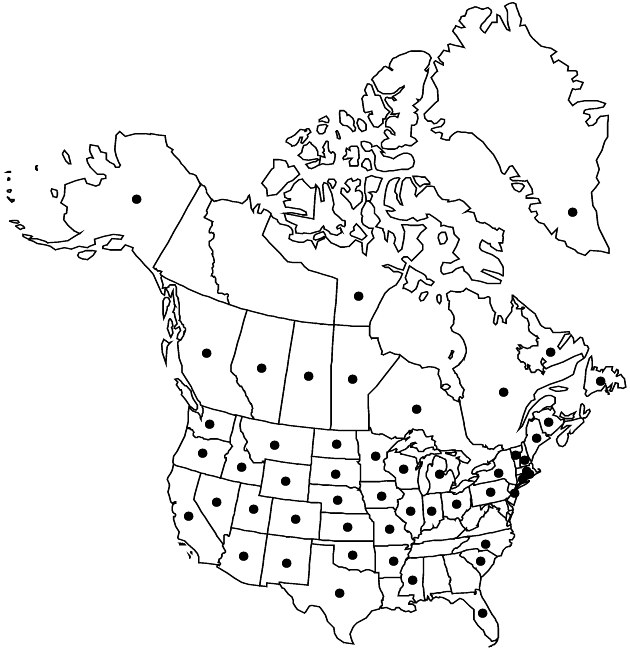Difference between revisions of "Artemisia campestris"
Sp. Pl. 2: 846. 1753.
FNA>Volume Importer |
FNA>Volume Importer |
(No difference)
| |
Revision as of 18:39, 24 September 2019
Biennials or perennials, (10–)30–80(–150) cm, faintly aromatic; taprooted, caudices branched. Stems usually 1–5, turning reddish brown, (often ribbed) tomentose or glabrous. Leaves persistent or deciduous, mostly basal; basal blades 4–12 cm, cauline gradually reduced, 2–4 × 0.5–1.5 cm, 2–3-pinnately lobed, lobes linear to narrowly oblong, apices acute, faces densely to sparsely white-pubescent. Heads (pedunculate) in (mostly leafless) paniculiform arrays. Involucres broadly turbinate, 2.5–3(–5) × 2–3.5(–7) mm. Phyllaries (margins scarious) glabrous or villous-tomentose. Florets: pistillate 5–20; functionally staminate 12–30; corollas pale yellow, sparsely hairy or glabrous. Cypselae oblong-lanceoloid, somewhat compressed, 0.8–1 mm, faintly nerved, glabrous.
Distribution

North America, especially mountains and high latitudes, Eurasia.
Discussion
Subspecies ca. 7 (3 in the flora).
Artemisia campestris varies; each morphologic form grades into another. The present circumscription is conservative in that only three subspecies are recognized; the subspecies usually can be separated geographically as well as morphologically. Populations in western North America consist primarily of subsp. pacifica; east of the continental divide, plants are assigned to subsp. canadensis in northern latitudes and to subsp. caudata in southern latitudes.
Selected References
None.
Lower Taxa
Key
| 1 | Perennials; stems 2–5; basal rosettes persistent | Artemisia campestris subsp. pacifica |
| 1 | Biennials; stems 1(–3); basal rosettes not persistent (withering before flowering) | > 2 |
| 2 | Involucres globose, 3–4 × 3.5–5 mm; n of 50°, primarily Canada | Artemisia campestris subsp. canadensis |
| 2 | Involucres turbinate, 2–3 × 2–3 mm; s of 50°, e from Rocky Mountains to coastal North America | Artemisia campestris subsp. caudata |